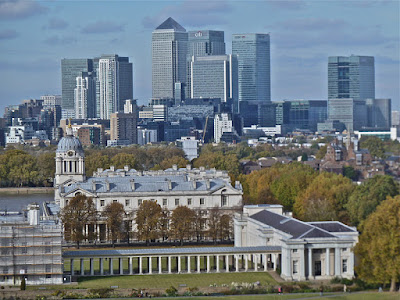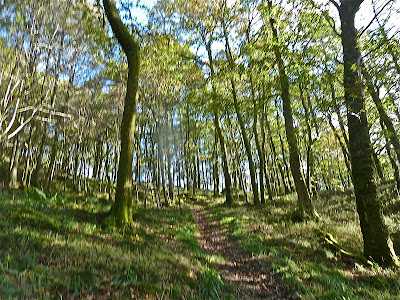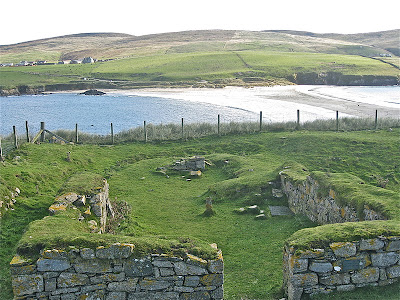 |
| Preston Bus Station |
I was woken this morning to the news that Preston Bus Station has been added to the World Monument List as an outstanding example of Britain's brutal architecture of the era. It was the world's largest bus station when it opened in 1970. The structure was built entirely of concrete which was mixed on site by a huge concrete mixer. The mixer was the responsibility of Paddy, a massive Irishman from Sligo, who worked every hour possible. He refused to allow anyone else to work on his mixer and if extra hours were needed then he would be there. I had the good fortune to be employed as his labourer for the summer of 1969. My responsibilities were to feed the mixer with vast quantities of gravel and sand using a massive electric shovel while Paddy measured the cement and watched carefully over the mixing. We had to manage the daily deliveries of sand and gravel, 4 or 5 truckloads, and produce a sample of every mix.
The concrete was delivered to the nearby compound by dumper trucks where it was poured into moulds with steel reinforcement to provide the long beams and the distinctively curved ends of the car park as seen above. They were taken out of the moulds each morning and stored until the samples had passed muster. By one of those strange coincidences, it was one of my former classmates who had just graduated in civil engineering who carried out the tests. Paddy abhorred the testers and there was a daily fandango over the test results. He had pride in his concrete and to him, the engineers were just lazy useless hangers-on, although I think he probably said, wankers. I sided with Paddy, I knew how meticulous he was and on one occasion when our samples were challenged, I was able to spot a flaw in my former classmate's calculations. We won the argument and I became Paddy's trusted accomplice which meant I always got to the front of the queue for the morning egg and bacon rolls because no one could start until Paddy, or Dennis as I was now allowed to call him, had delivered his first batch of concrete.
I was paid 6s 8d an hour, but together with overtime and a weekly bonus based on production I was taking home £50 - £60 a week. I gave my mother £30 a week for upkeep which was quite a bit more than she received from my father and it caused a bit of family tension at the time. I ended the summer with sufficient funds to travel to Australia where I had obtained a place to do a post-graduate degree in Sydney. I also had something concrete on my CV to go along with my recent degree. I had learned the survival techniques of a building site. Hit all your production targets, make sure there is self-imposed quality control, support the wider team and, if asked, cover for your colleagues. And take no time off no matter how much you have drunk the previous night. My graduation came when Dennis decided to take a week's holiday to go home, which was unheard of, and he insisted with the foreman that I was to be his deputy and responsible for mixing the concrete. He knew that I would be leaving a few weeks later and he wanted to come back to a functioning mixer. I have never been so careful with any machinery - this was Dennis's pride and joy and his total commitment to the job and his machinery was a lesson for life.
I have watched with interest in recent years as the debate about the future of the bus station has oscillated between demolition or designating it a listed structure. The City Council see it as a prime site for the redevelopment of the city centre and dismiss it as a dysfunctional building. The defenders see it not just as an iconic symbol of municipal pride but as a building capable of transformation into a more user-friendly transport and social hub.
I agree that the bus station in its present format is not a pleasant place, despite the superb materials used in its construction. The hard internal detailing eschews the creation of attractive social meeting places and the subways to exit the bus station and car park add time and perceived danger. Catching a bus from outside Millar Arcade was always a more sociable experience, juxtaposed between newsstands, florists, tobacconists and just across from the Odeon, which was the social epicentre of the then town. But the bus station is close to Preston's markets, the Guild Hall and the municipal offices in the city centre, but it feels like an island in a sea of asphalt.
It is capable of becoming more of a hub if only some of the vast apron of tarmac on the west side were used to provide space for city centre activities (stalls for charities, craft and local produce) and the subways were replaced by a ground level pedestrian way through the stalls. This could be easily achieved by rerouting access by the buses. A John Lewis Store, which seems to be a key objective of the City Council, could be erected on the apron or even more exciting if the structure could take it, on the top floors of the bus station - it is big enough to provide 100,000 sq. ft. of floor space. This would also allow the largely empty car parking spaces to be fully utilised. I understand why John Lewis store is an objective, it is one of the few guaranteed retail attractions but when I had discussions with their agents a couple of years ago, they informed me that they would not be developing very many new stores over the next few years.
Let's face it if a new centre was ever built some of the existing stores from the existing centres would just relocate taking advantage of the rent-free units that a developer would have to offer as inducements, Owen Owens would not reappear. Like most other city centres Preston is over-endowed with existing retail space and to believe that the bus station site would be transmuted by developers into a new retail centre shows a naivety by the City Council that beggars belief. Even before the recession and fast approaching double dip that was unlikely; online shopping has finally put paid to the perpetual expansion of retail floorspace.
So the better option is redesigning the bus station so that it becomes a bold brutal beauty of a business/community centre in a building that will last far longer than the canopies being erected today. There is scope for making space for business units and aiming for a critical mass of innovative products and services or creating some meeting spaces or a touchdown centre in a central location. Linking the bus station with safer ground level routes to the markets would benefit the many thousands of citizens who are financially stretched and depend upon the locally produced fruit and vegetables and the keen prices of the markets. There is also a need to ensure the quality control of stallholders in Preston market, there were far too many rogue traders last time I visited, but this is something that Bury has done through strong self-management of its market.
The City Council should invest time and involve the users and providers of city centre shopping in redesigning the bus station and its links to the centre. This would be a far better way of respecting Dennis's legacy in concrete than chasing the rainbows of false hope that retail developers try on with every major town and city authority. I have been there on more than one occasion and it is like dancing with wolves. The Councillors and their advisers have been duped by developers into believing that they can create a new retail mecca on the back of demolition the very transport hub that it would depend on. Demolition would simply produce a hole, more than big enough to fill the Albert Hall and that is Blackburn's business.

























